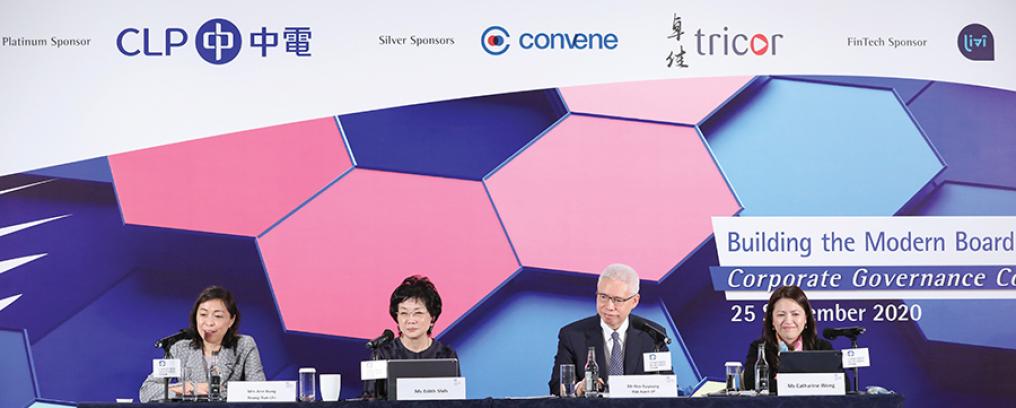Vivian Chow, Principal of Risk Advisory, BDO, examines the latest guidance on long suspension of listed companies, delisting framework and resumption conditions, and provides practical advice for issuers seeking a resumption of trading.
Listing suspension serves to protect investors and public interests in ensuring trading activities only take place on a fully informed basis under a fair and orderly market. The latest delisting framework and implementation of relevant amendments to the Listing Rules of The Stock Exchange of Hong Kong Ltd (the Exchange) is aimed at providing a degree of certainty to the market on the delisting procedures for long suspended listed companies, as well as to facilitate timely delisting of poor quality companies, while encouraging those suspended companies to act promptly towards resumption. In conjunction with the delisting framework, the Exchange has also introduced specific suspension requirements for listed companies with a disclaimer or adverse audit opinion, with the intention of incentivising listed companies to improve the quality and reliability of their financial information and to act promptly to resolve audit issues with their auditors.
While suspension initiation may be voluntary or involuntary, the latest Rule Amendments push listed companies to respond in a timely manner to confront issues and shorten the suspension period. More importantly, to avoid prolonged suspension, listed companies need to be vigilant in self-regulation, thus improving governance, strengthening management and product quality, and improving information transparency.
Suspension initiation
Suspension can be initiated by the listed company itself or by the market regulators, namely, the Exchange and the Securities and Futures Commission (SFC). Companies may seek suspension, for example, to facilitate important announcements on price sensitive information; in the case of material corporate activities, such as a placement or rights issue; or from fundamental concerns about the suitability for continued listing, such as involvement in material litigations, liquidation, or cessation of operations.
Suspension at the direction of the regulators varies from case-to-case and can occur when the Exchange is of the view that a company has seriously breached the Listing Rules, such as through failure to publish financial results, disclose inside information, or maintain sufficient operations and assets to support its operations. The SFC may also direct the Exchange to suspend trading of shares in any listed company under the Securities and Futures Ordinance (SFO), if any company’s documents or announcements appear to contain any materially false, incomplete or misleading information. Trading suspension allows companies to formally address matters of concern to the satisfaction of regulators, thereby protecting current and potential investors.
Keys to the latest delisting framework
The delisting and other Listing Rule amendments became effective on 1 August 2018 (effective date). Key elements of the changes to the Listing Rules are related to delisting criteria and timing.
- Fixed period delisting criterion. This new criterion allows the Exchange to delist issuers whose trading has been suspended for a continuous period of 18 months (prescribed period).
- New delisting process. The new process allows the Exchange to publish a delisting notice specifying a set period of time (specific remedial period), which may be shorter than the prescribed period, for the issuer to remedy the relevant underlying issues if it considers such issues ought to be remedied within a shorter period. Examples include an issuer with insufficient public float, or an issuer that has failed to take adequate action to remedy the issues, thereby prolonging the duration of suspension. In exceptional and/or appropriate circumstances, the Exchange may delist an issuer immediately if it considers that events triggering the application of a delisting criterion are fundamental to the general principles of listing and are beyond remedy. For example, if an issuer’s management and controlling shareholder are found to have conducted fraudulent activities to overstate its business and profits, it will no longer be suitable for listing.
- Removal of Practice Note 17. The previous Practice Note 17 (PN17), a three-stage delisting procedure for issuers without sufficient operations or assets, has been removed because the Exchange may delist PN17 issuers under either the fixed period delisting criterion or the new delisting process. The Exchange has also addressed the transitional arrangements for issuers whose securities have been suspended continuously since before the effective date.
Guidance on long suspension and delisting
The Exchange also published Guidance Letter HKEX-GL95-18 (Guidance Letter) to provide guidance to long suspended issuers on the operation of the new delisting regime, their general obligations, the Exchange’s regulatory actions during the resumption process and guidance specific to certain types of suspension cases.
The Guidance Letter stresses that the deadline of the specific remedial period is intended to cover the resolution of relevant issues, the vetting process by the Exchange, re-compliance with the Listing Rules and resumption of trading. Otherwise, upon the expiry of the specific remedial period, the Exchange may cancel the listing of a long suspended issuer. Therefore, to avoid delisting, devising a resumption plan with a well-defined timeframe is critical to ensure that the relevant issues are remedied and the Listing Rules are re-complied with as soon as practicable before the specific remedial period ends.
Amongst the suspension cases that the Exchange discusses in the Guidance Letter, it is worth highlighting those suspended issuers that have failed to publish financial results or inside information due to alleged material accounting or corporate irregularities, and/or significant weaknesses in internal controls, as these are frequent reasons for suspension that may lead to serious and difficult-to-resolve issues. Common accounting irregularities, usually detected by the auditors, may involve discrepancies between the company’s accounting records on transactions and those from third parties or independently obtained by the auditors, as well as concerns about the authenticity of company documents such as accounting records on bank balances. Weaknesses in internal controls can be indicated by lack of information and evidence to substantiate the existence or ownership of material assets, or by the failure to keep proper books and records. Suspension is also often triggered by corporate irregularities, such as potentially fraudulent activities that are discovered by the board of directors, auditors, media, market commentaries or rumours, the SFC or other regulators.
The issuers must satisfy the Exchange that the above irregularity issues have been addressed and remedied in order to meet the resumption conditions. This includes addressing audit issues raised by the auditors and allegations or findings of material irregularities raised by forensic investigators, media, market commentaries or rumours, or regulators. Outstanding financial statements and financial statements containing material misstatements or errors are to be rectified and subsequently published. More importantly, management integrity, along with adequate internal controls and procedures to rectify such material control weaknesses, must be demonstrated. The Exchange stresses the overall resumption condition is that the issuer has ensured compliance with the Listing Rules and safeguarded the interests of the issuer.
Latest suspension requirement for listed issuers with a disclaimer or adverse audit opinion
In May 2019, the Exchange published its consultation conclusions on the proposed trading suspension requirement applicable to issuers with a disclaimer or adverse audit opinion on their financial statements, as it considered that the previous Listing Rule did not adequately address such concerns, since several issuers had not taken prompt and adequate actions to address audit issues, resulting in repeated disclaimer of opinions. Given that a disclaimer of opinion indicates a risk of material and pervasive misstatements in the financial statements, the Exchange is concerned about the reliability of the financial information; consequently, it will now normally require a trading suspension if the auditor has issued or has indicated that it will issue a disclaimer or adverse audit opinion on the issuer’s annual financial statements.
Trading will remain suspended until the issuer has addressed the matters giving rise to the disclaimer or adverse opinion, provided comfort that such disclaimer of opinions would no longer be required and disclosed sufficient information for investors to make an informed assessment of its financial position. Examples of how an issuer could provide comfort that a disclaimer or adverse opinion would no longer be required include publishing a full financial year audit or a special interim audit of the issuer’s financial statements, or a special engagement of the auditor to perform audit on a single financial statement of the issuer.
Although the issue of a disclaimer or adverse opinion will almost always require a trading suspension, the suspension requirement will not apply where the disclaimer of opinion solely relates to a going concern, or the issues giving rise to the disclaimer or adverse opinion are resolved before the publication of the annual results announcement and disclosed with sufficient information to enable investors to make an informed assessment of its financial position.
Recent trends in regulatory actions
With the latest delisting framework and suspension requirements in place, the Exchange has the power to set a shorter specific remedial period, while if the resumption condition cannot be fulfilled before the end of the specific remedial period, the Listing Committee will immediately cancel the listing of any securities to protect investors and maintain an orderly market. The Exchange has been closely monitoring each suspended issuer’s ongoing compliance with the Listing Rules and their resumption progress through reviewing their quarterly and other announcements, making enquiries and requesting supplemental announcements, and has been changing the requirements of resumption conditions where appropriate, while providing continuous guidance if sought by the issuer.
Looking at the monthly prolonged suspension status reports of issuers listed on the Main Board that have been suspended for three months or more, the five most common reasons for trading suspensions are: (1) severe financial difficulties, and/or where the company has either ceased to operate their business/es or has entered delisting procedures, (2) irregularities have been identified, and/or the company is under regulatory investigation, (3) failure to publish financial results, and/or where material internal control weaknesses have been identified, (4) there is a disclaimer and/or adverse audit opinion on the financial statements, and (5) failure to inform the market of material information and/or the company has insufficient public float.
A resumption of trading may also mark the beginning of an investigation by the SFC Enforcement Department (within the Listing Division) under the SFO into the listed issuers and their officers for past breaches of the Listing Rules and regulations, which could ultimately result in disciplinary action, where appropriate. According to SFC Enforcement Letters, the most common enforcement themes/investigations pertain to: (1) breaches of directors’ duties, (2) inaccurate, incomplete and/or misleading disclosure, (3) breaches of procedural requirements relating to notifiable and connected transactions, and (4) financial reporting issues.
Insights into trading suspension and resumption processes
The reasons for trading suspension vary from case to case. Some companies are suspended from a disclaimer or adverse opinion due to irregularities uncovered by their auditors during the course of their audit. Others may be suspended as a result of their failure to publish their annual results by the deadline required under the Listing Rules.
Issuers are encouraged to stay vigilant to avoid the possibility of trading suspension by strengthening their governance framework, and establishing and maintaining appropriate and effective risk management and internal control systems, including measures to control and manage controlled entities and associates, and to properly keep their books and records, actively engaging and communicating with their auditors prior to and during the audit to promptly resolve any audit issues.
Once suspended from trading, issuers should seek resumption of trading as soon as possible. With the prescribed period of 18 months, it is important for issuers to devise a resumption plan with actions to demonstrate their intention to remedy the issues and to re-comply with the Listing Rules, and to promptly announce their resumption plan and the timetable. Depending on the nature of the underlying issues, specific resumption conditions will be imposed by the Exchange and no resumption will be allowed unless and until those conditions are fulfilled.
Fulfilling resumption conditions to the Exchange’s satisfaction is a long process and is unlikely to be a straightforward task. Practical points that issuers should consider when seeking a resumption of trading, especially due to identified irregularity issues and/or investigations by regulators, include:
- establishing a special independent committee by the board to conduct investigations and review the issues
- engaging forensic accountants, as investigation is normally required when accounting irregularities from audit concerns or possible fraudulent activities are identified
- demonstrating adequate risk management internal control systems
- demonstrating the integrity and competence of directors and/or senior management
- assessing the relevant issues identified by the SFC and seeking the approval of resumption from the SFC, and
- publishing regular update announcements after being vetted by the Exchange to inform the market of the latest developments in the investigation and the resumption process.
Vivian Chow
Principal of Risk Advisory
BDO



